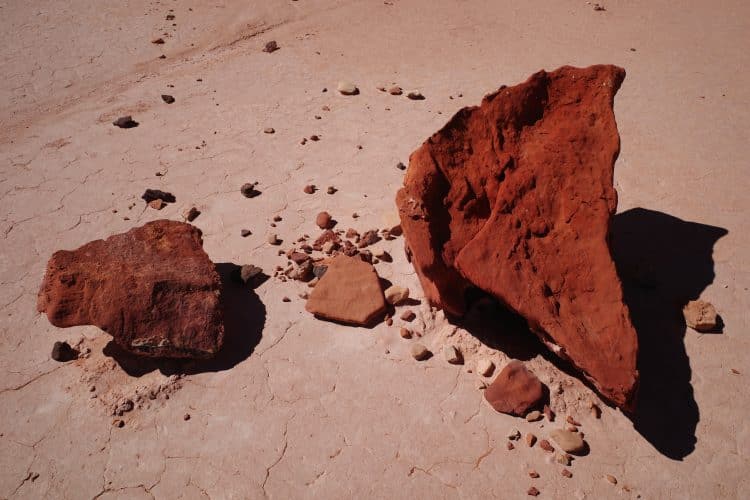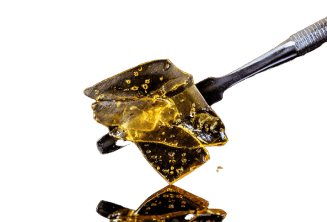Cannabis sativa extracts have become increasingly popular with consumers for their purity as well as their potency. Demand for lighter colored extracts has led some extractors to develop a process known as ‘polishing.’ This process effectively removes unwanted compounds from a cannabis extract, including pigments.
We have previously discussed how activated charcoal and silica are used in the extraction polishing process. Another effective polishing material is naturally occurring fine-grained bentonite clay, which has been used commercially since 1888 when it was called “Taylorite.” [1]
Bentonite consists of sheets of alumina (Al2O3) and silica (SiO2) since it is primarily composed of the smectite mineral montmorillonite. [1] As a clay, it has a moderate-high cation exchange capacity (montmorillonite estimated at 70-110 milliequivalents per 100 grams) [1], which refers to its ability to attract and hold positive ions such as potassium (K+) and calcium (Ca2+), two important ions in soil nutrients.
Bentonite is usually strip-mined and appears in formations known as “lenses” which are thick in the middle while tapered on the ends. [1] It readily adsorbs water and organic materials. [1] The chemical composition—SiO2 and Al2O3 as well as magnesium, calcium, and potassium oxides— plays a role in its adsorbent capabilities as one study noted when testing bentonite as a possible defluoridation method for drinking water. [2] But what about extract polishing?
A recently published patent application describes bentonite as a useful tool in removing unwanted pesticides and heavy metals from cannabis extracts, acting as a medium for chemisorption where pesticide analytes can be adsorbed chemically. However, bentonite is also described as a solution for “colorless” or “very light yellow” cannabis oil.
Activated bentonite is heated with sulfuric acid to enhance adsorbent/bleaching capacity. The degree of activation or clay enhancement depends on desired outcomes. For example, Carbon Chemistry produces two grades of activated bentonite: T-5™ with a neutral pH for fast filtering, and T-41™ with a low pH and activated carbon for more thorough refinement.
One study found that activated bentonite significantly reduced chlorophyll and carotene content in cold-pressed hemp seed oil to “produce a lighter and pale colored oil.” [3] Furthermore, ultrasonic treatment used in conjunction with activated bentonite also increased the oxidative stability of the oil, which should improve shelf-life. [3]
Whether bentonite will be adopted as a standard polishing material across the cannabis industry remains to be seen. Regardless, clay minerals undoubtedly illustrate efficacy as adsorbents in multiple industries.
References:
- Clem AG, Doehler RW. Industrial applications of bentonite. Clays Clay Miner. 1961;10:272–283. https://doi.org/10.1346/CCMN.1961.0100122. Times cited = n/a, Journal impact factor = 1.507
- Thakre D, et al. Magnesium incorporated bentonite clay for defluoridation of drinking water. Journal of Hazardous Materials. 2010;180(1-3):122-130. https://doi.org/10.1016/j.jhazmat.2010.04.001. Times cited = 96, Journal impact factor = 9.038
- Liang J, et al. Reduction of chlorophyll in cold-pressed hemp (Cannabis sativa) seed oil by ultrasonic bleaching and enhancement of oxidative stability. European Journal of Lipid Science and Technology. 2018;120(4):1700349. https://doi.org/10.1002/ejlt.201700349. Times cited = 4, Journal impact factor = 2.056
Photo courtesy of Josh Boaz at Unsplash












